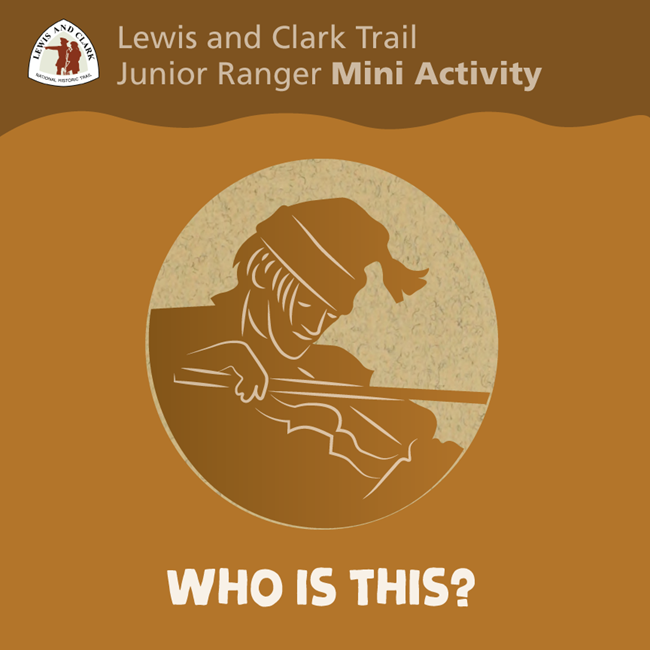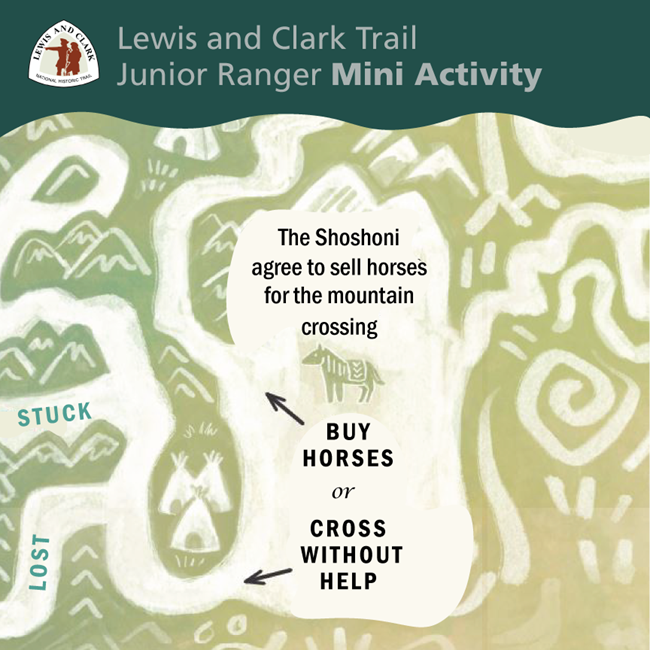
Image adapted from Michael Haynes original artwork. July: Promise of AmericaWe will explore the complex, diverse, and uniquely American natural, cultural, and historical identities that build on our nation’s revolutionary ideas and promises.Post: This #July4th week, if you’re thinking of iconic American feats like the #LewisandClark Expedition, think of the diversity of skills and backgrounds that helped the expedition make it to the Pacific Ocean and back. The new Lewis and Clark Trail #JuniorRanger program teaches participants about lesser known members, their varied heritage, the languages they spoke, and their unique contributions. Who was this expedition member? CLUES: Of French and Omaha ancestry, this expedition member was skilled in Indian sign language. He excelled in navigating rivers. He spotted routes and obstacles even though he had use of only one eye. Learn more about the expedition: https://www.nps.gov/lecl/learn/historyculture/people.htm Find more Lewis and Clark Junior Ranger Online activities www.nps.gov/lecl/learn/kidsyouth/beajuniorranger.htm, or find a site along the Trail and ask if they’re welcoming Junior Rangers in person, visit www.nps.gov/lecl. Image adapted from Michael Haynes original artwork. 
Visual: Junior ranger maze mini activity. Download image and include image description (Alt-text) at end of post or embedded. Date to post: Any time in July Image description (Alt-text): illustrated maze shows a choice. The Shoshoni agree to sell horses for the mountain crossing. Buy horses. Cross without help. Cross without help choice leads to stuck, lost. Lewis and Clark Trail Junior Ranger Mini Activity.
Post: Which way should the expedition proceed? To many, Lewis and Clark are as synonymous with America as apple pie and the fourth of July. What’s sometimes forgotten? The tribes, who were rooted on the land long before 1803, were as important to the Lewis and Clark Expedition’s fate as the namesake Captains themselves. The new #LewisandClarkTrail #JuniorRanger program features a maze of choices that demonstrates how the aid, cooperation, peace, and tolerance offered by tribes was crucial to the survival of the #UniquelyAmerican Lewis and Clark Expedition. Find more Junior Ranger Online activities at www.nps.gov/lecl/learn/kidsyouth/beajuniorranger.htm or find a site along the Trail and ask if they’re welcoming Junior Rangers in person by visiting www.nps.gov/lecl. Looking for something ready-made to share?Social Media hashtags: #FindYourPark, #FindYourTrail, #LewisandClarkTrailLewis and Clark Events That Happened This MonthOn July 4, 1804, the Corps of Discovery observed the first Independence Day west of the Mississippi. The men camped in the area of today’s Atchison, Kansas. It was here where Captain Clark named two small streams in honor of the holiday – 4th of July 1804 Creek and Independence Creek. #LewisandClarkTrailMore: https://www.nps.gov/articles/lewis-and-clark-s-fourth-of-july-1804-in-kansas.htm On Friday, July 15, 1803, Meriwether Lewis arrived in Pittsburgh intending to stay just a few days before beginning his journey down the Ohio River. It wasn’t to be. Instead he waited six long, frustrating weeks. Lewis Arrives in Pittsburgh July 15, 1803 (U.S. National Park Service) (nps.gov) After departing Travellers Rest on the return journey, Lewis and his detachment followed the Cokahlarishkit Trail, or “Road to the Buffalo,” to cross the Continental Divide. The trail, which had been identified to Lewis and Clark by the Nez Perce, had long been an established transportation corridor for American Indians. On July 7, 1806, they passed through the Alice Creek drainage. Lewis described “much appearance of beaver many dams” and noted that the “bottoms not wide and covered with low willow and grass.” #LewisandClarkTrail More on Alice Creek: https://www.nps.gov/places/alice-creek-historic-district.htm On July 19, 1805, Lewis wrote, “this evening we entered much the most remarkable clifts that we have yet seen. these clifts rise from the waters edge on either side perpendicularly to the hight of 1200 feet. every object here wears a dark and gloomy aspect. the tow[er]ing and projecting rocks in many places seem ready to tumble on us. the river appears to have forced it’s way through this immence body of solid rock for the distance of 5¾ miles and where it makes it’s exit below has thrown on either side vast collumns of rocks mountains high. the river appears to have woarn a passage just the width of it’s channel or 150 yds.”More on Gates of the Mountains: https://www.nps.gov/places/gates-of-the-mountains.htm During the return journey, Lewis decided to explore up to the headwaters of the Marias River in order to determine if it extended north of the 49th Parallel (thereby expanding the northern boundary of the Louisiana Purchase), and discover if there was an easy portage between the Marias and Saskatchewan rivers (which could route western Canadian fur trade to the Missouri). Why did he name this area Camp Disappointment? https://www.nps.gov/places/camp-disappointment-mt.htm The Two Medicine Fight Site represents the first encounter between the Blackfeet Nation and the United States, the first military conflict between the United States and a Plains Tribe, and the only violent encounter between the expedition and American Indians of the entire journey. Learn more: https://www.nps.gov/places/two-medicine-fight-site-mt.htm On July 25, 1806, while descending the Yellowstone River, Clark “arived at a remarkable rock Situated in an extensive bottom on the Stard. Side of the river & 250 paces from it.” He wrote that, “this rock I ascended and from it’s top had a most extensive view in every direction. This rock which I shall Call Pompy’s Tower [named for Jean Baptiste ‘Pomp’ Charbonneau] is 200 feet high and 400 paces in secumphrance and only axcessable on one Side which is from the N. E the other parts of it being a perpendicular Clift of lightish Coloured gritty rock on the top there is a tolerable Soil of about 5 or 6 feet thick Covered with Short grass. The Indians have made 2 piles of Stone on the top of this Tower. The nativs have ingraved on the face of this rock the figures of animals &c. near which I marked my name and the day of the month & year.” #LewisandClarkTrail More: https://www.nps.gov/places/pompeys-pillar-mt.htm On July 25, 1805, the expedition finally reached the headwaters of the Missouri River. It was here that Sacagawea had previously been kidnapped by the Hidatsa during a raid on a Shoshone camp. #LewisandClarkTrail Read more: https://www.nps.gov/places/three-forks-of-the-missouri-mt.htm |
Last updated: July 6, 2021
